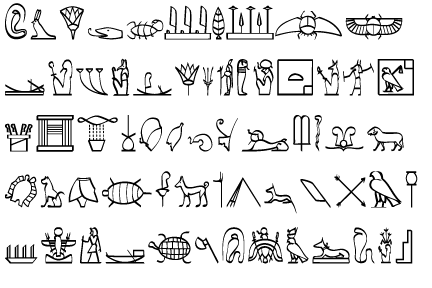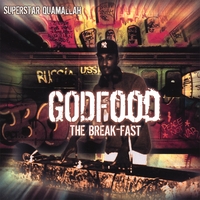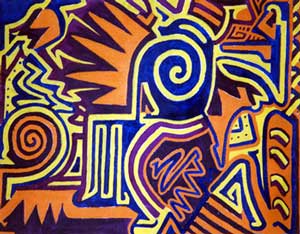 The Henry Chalfant Interview
The Henry Chalfant Interview
by Blake Reznik
What made the social climate so ripe for the NYC graffiti explosion of the 70’s and early 80’s?
Primarily in the early 70’s, NYC was in a severe decline; there was a massive movement of funds out of parts of the city like the South Bronx. Deferred maintenance of the subways and really a tremendous neglect of human services and infrastructure, timed with an effort by landlords all over the city within rent-controlled buildings to try and get their investments back. They weren’t getting any income to fix these buildings, and many of them started doing it by illegal means, called “arson for profit.” That’s the era when neighborhoods like the South Bronx were burning down. In that time period of neglect and neglect of the subways as well, it seemed like an ideal breeding ground for all kinds of things. Kids started writing on walls and on trains, not that they hadn’t done it before. But I think another important factor that contributed to this was a technological revolution in the form of the “permanent marker.” Helen Levitt had photographs of graffiti from the 1940’s but it was done in chalk or crayon, impermanent things.
What was it about graffiti art that initially intrigued you personally?
Myself, I was an artist at the time working in New York, I hadn’t lived here very long, I moved here in ’73. In the first 3 years of my riding on the trains I was watching this stuff go on and it intrigued me. You’d go down into the subways anticipating what new thing you might see more outrageous and amazing than you’d seen before, and you were often satisfied, as the things grew bigger, more interesting and bolder as time went along. I was paying attention more to that than I was paying to the New York art movement at the time, which was much more geared to conceptual art and minimal art which was at least as far as a visual expression goes, very limited.
At that time, who was painting prolifically?
The first writers I saw when I visited New York before I moved there, were people like “Cay161” and I saw “Taki” tags too. I couldn’t begin to remember everyone right now. I guess in as much as I could recognize at that time who was painting the trains in the early 70’s, I’d have to say: “Tracy(168)”, “Pnuts”, “Cliff”, “Riff”, “Blade.” I only began taking pictures in ’76 and it was only then that I discovered that the trains also ran outside, having lived only in Manhattan I thought everything was underground. That’s when I realized that I could take pictures from the outside. I began going up to the Bronx and Upper Manhattan mainly, because I lived in the Upper West Side so I could get to those places easily, so I tended to go to those places to take pictures early on.
Were Subway Art and Style Wars conceived at the same time or as individual projects?
Well they were conceived differently, more or less at the same time but very differently. I think it was in 1980 when I had a show at O.K. Harris, that’s when I first met Martha Cooper (co-author Subway Art), by then I had already met writers and knew writers and it was “Dondi” who introduced me to Martha. He told her about the show and that she should come and see it, he’d already told her about me as he’d told me about her, that there was this other photographer out there. So it was at the show that I first met “Marty” and we were competitive for a while (laughs) which drove us on to get out there earlier and more often. It wasn’t too long after that that there was an article in the Village Voice that I had a spread of photos in, and it was at that point I started to consider the idea of doing a book. Richard Goldstein and I talked about doing a book at that time. We actually put together a package, he wrote the introduction and I provided the photos, and we went around to publishers in New York and no one was interested, so we dropped the idea. Then later on, Marty and I decided that we would try again, that with all of our photos taken in different ways as they were, we felt we could really put together a story with good pictures. So we put together the proposal and went around again to the publishers in New York and again got no response. Marty had connections with an agent in Germany and we contacted her and she said come to the Frankfurt book fair where all the publishers from around the world go and they’re accessible. She actually said send your book, but we thought we’d bring it ‘cause it was a huge mock up. We just thought it would be better if we’d brought it, and I’m glad we did because if we’d left it in the hands of the agent, nothing would’ve happened. So, we dragged our book around on a luggage trolley, and we met the people at Thames and Hudson. The art director at Thames and Hudson, Connie Neurath, she loved the stuff and easily persuaded her brother Thomas Neurath to publish the book. That’s how the book (Subway Art) got started.
The film idea came about 6 months after the O.K. Harris show; In Spring of ‘81 I did a performance piece in Common Ground, a performance space in Soho. The piece was called “Graffiti Rock” in which I brought together graffiti slides; break dancers in the form of “Rock Steady Crew” and Fab Five Freddy and Ramelzee as the rappers. The interesting thing is nobody downtown had ever even heard of breaking or seen it at that time. So, I’d heard about it because Marty had stumbled upon breaking in her search for interesting stories. She was a photojournalist and she would listen to police calls, and one night she heard a call about a “rumble” at a station in Washington Heights, so she ran over there to see what was going on and she found these little kids explaining to the cops that they were dancing (laughs). So when I had this performance, I thought it would be interesting to find “breakers.” So, I asked one of the writers I knew, “Take 1” and he said “oh yeah” he knew the best crew in the city, and the next day he brought “Frosty Freeze” and “Crazy Legs” to my studio. That was the performance that Tony Silver the filmmaker came to, he’d met me before and seen my name in connection with the graffiti articles, and an article in the Village Voice that Sally Banes wrote about breaking that also announced the performance. He called me up and wanted to see the show. At the show he asked me if I wanted to collaborate with him on a film, so that’s how the film idea came about (Style Wars). The first thing we shot was the battle at U.S.A between Rock Steady and Dynamic Rockers.
How was the film funded?
For the film we had to raise the money, our first money came from Channel 4 in England, after that we got the Corporation for Public Broadcasting, the rest of the money came from the National Endowment for the Arts Media and Folklore Program, National Endowment for the Humanities Grant, as well as a New York State Council for the Arts Grant and a couple of private foundations.
How were you able to initially immerse yourself in the graffiti subculture?
I didn’t really meet any artists for the first three years that I was taking photographs, the result was when I did meet artists I had a huge collection of stuff already in which they quickly recognized their own work. So, I was steered to the “Writer’s Bench” by a kid that I met on the platform while taking pictures one day. I went to the Writer’s Bench at 149th Street and met at that time “Kel,” Mare,” “Shy,” “Crash,” and “Daze” who became sort of the core of the people that I knew. They were very active at the time and I had a lot of their pictures so they saw that and therefore they were relatively quick to accept me. There was certainly some suspicion that I was up to some sort of police work. So there was a lot of that for months, where they were a little shy or not forthcoming or worried, most of them admitting it later, ‘cause they didn’t let on to me. They admitted later that they thought I was just biding my time, waiting to get everybody together to get the information I needed to have a massive citywide bust (laughs). But, it never played out that way and fears were laid to rest. It was really a good relationship we had between us, because they gave me information, and I gave them pictures.
At the undertaking of Style Wars, did you think most of the artists would want to conceal their identities?
Well, the people who wanted to conceal their identities said so initially, and didn’t become a part of it. The climate was much different than it is now, the city’s battle was more of a battle between kids, they didn’t have the resources or means to implement the police-state tactics that are in place now. The courts were overwhelmed, and the cops would bring in a graffiti writer and the judge would just sort of shrug and say “forget about it.” There was a rule in place that the courts wouldn’t even pay attention unless the police actually caught someone in the act. There was none of this comparing of black books and photos which happens now. So people weren’t that cautious. A case in point when I did contact “Cap” he said he would be interviewed but he’d wear a ski mask because he didn’t want to be identified, not so much for the cops but for other writers. The interesting thing was that in the whole process of filming and being interviewed he threw away the idea of wearing the mask.
Did you ever have any encounters with the authorities while either shooting photos or filming?
A couple of times the cops came, because it’s not legal to take pictures on the trains, not having anything to do with graffiti but there is a rule, probably to protect against sabotage. There is also a rule that prohibits taking pictures on Transit Authority property without permission. However, the permission process is kind of ridiculous you go through the rigmarole and bureaucracy of getting permission and then it only lasts for a couple of days. I just said that’s crazy, I’m not gonna do it, I’ll take my chances. The truth is I would get stopped by cops who would say “you can’t do this” and I would just pretend to be an innocent sociology professor. I was always a little afraid of encountering the same cop again, but luckily that didn’t happen. For Style Wars we had to get permission, because taking film crews into the yards was far too expensive to risk aborting each time, so we had to get permission. Also, we’d wanted to interview (Ed) Koch and the Transit Authority, so we had to let them know what we were doing. They made us promise not to shoot the film illegally, and in that case they would give us controlled access. Representatives from the TA would take us down into the tunnels, that’s how those scenes were shot. We did attempt to go in clandestinely with “Seen” one night, but the place was crawling with cops, so we called it off.
Was there ever any situations that you felt were life threatening during these projects?
I saw a few guns, which definitely made me nervous. I think one of the scariest things was, that since I was in a neutral position and knew crews from all over the city, a lot of the people I knew were mortal enemies of one another. It was sometimes hard to keep people out of each other’s way, ‘cause they’d all converge on my studio. There were a number of fights in front of the studio; this was at a period when there were also a couple of shootings (none of these occurring in front of the studio however).
How did your peers react to the undertaking of these projects?
Well where I had my studio, which was an artist Co-op in Soho, opinion was divided. “Crash” painted a piece on the front of my studio door, and the Co-op as a group insisted that I take it down, they allowed me to keep it up for two months and then had me paint it over, which gives you an idea where they were at. There were a few people who thought it was great, but the majority of people in the Co-op didn’t care for it. Part of the reason was that they were all artists, so why did this kid have permission to do it, if they all had their way they’d all paint the door (laughs). At the same time there was a feeling that it was a mess, they didn’t want the neighborhood to become covered with graffiti, and they blamed me when it did. Some of my neighbors were really incensed by it, because there were a lot of kids coming by the studio, and they would wait outside for me. So there would be kids hanging out and the neighbors were afraid of them, it was the usual sort or racist attitude, people were afraid of black kids. My immediate neighbor told me that I was irresponsible to be associating with such people without being a professional, meaning at the very least I should be a social worker to be able to safely traffic or hang out with people whom I was incompetent to know what to do with.
Did you ever imagine that Subway Art would gain the success and popularity it did?
No, photo books tend to sell very few copies and the initial run I think was 3,000 copies. We had no idea, we were just happy having the book as a kind of proof of having done something (laughs) if we sold nothing and had 5 copies ourselves we’d have been happy at that time. It really came as a surprise to us, and a surprise to the publisher. I don’t think anybody believed that it would still be in print from 1984 until now (2000). (As of 1995 Subway Art had sold over 150, 000 copies.)
Part two coming Thursday!






















